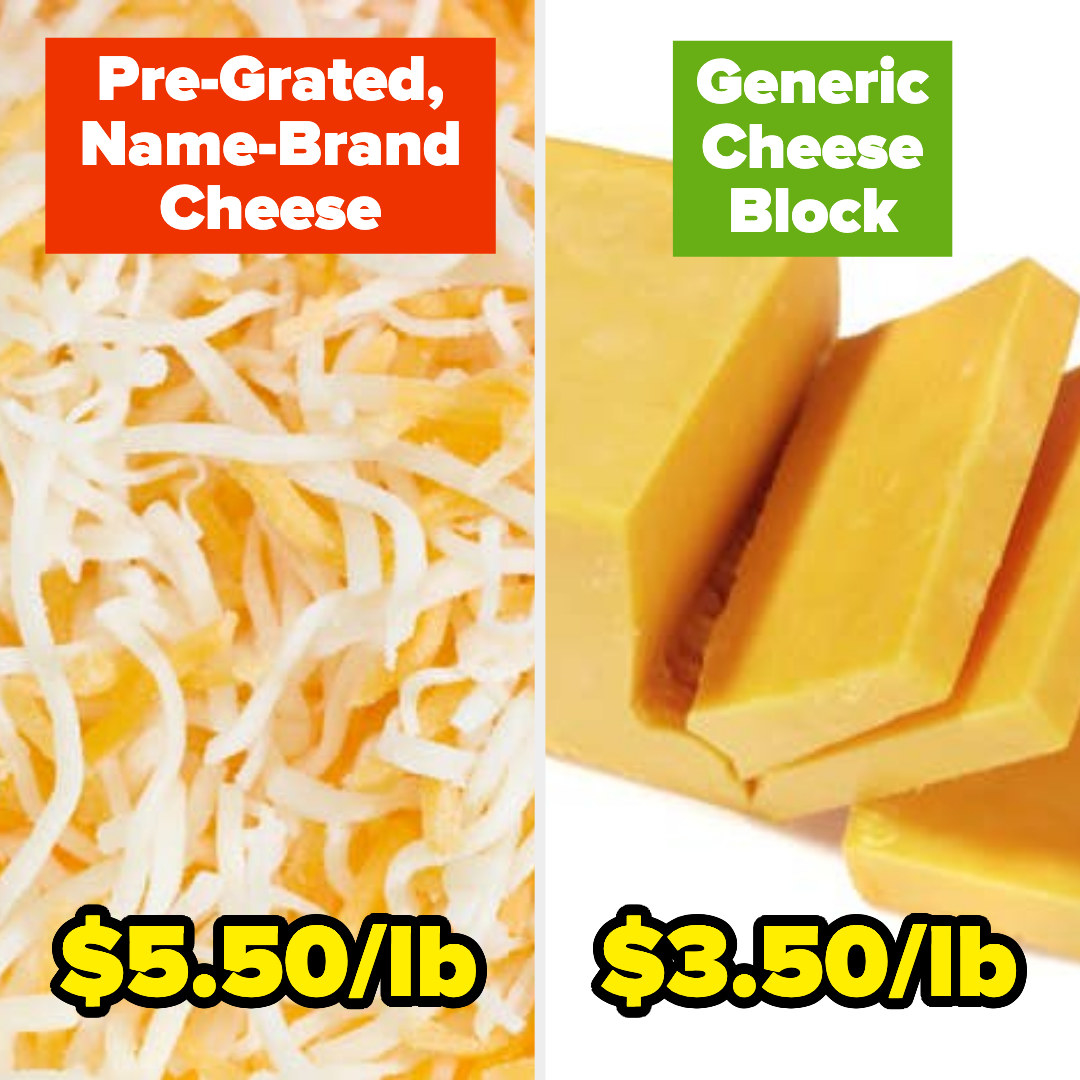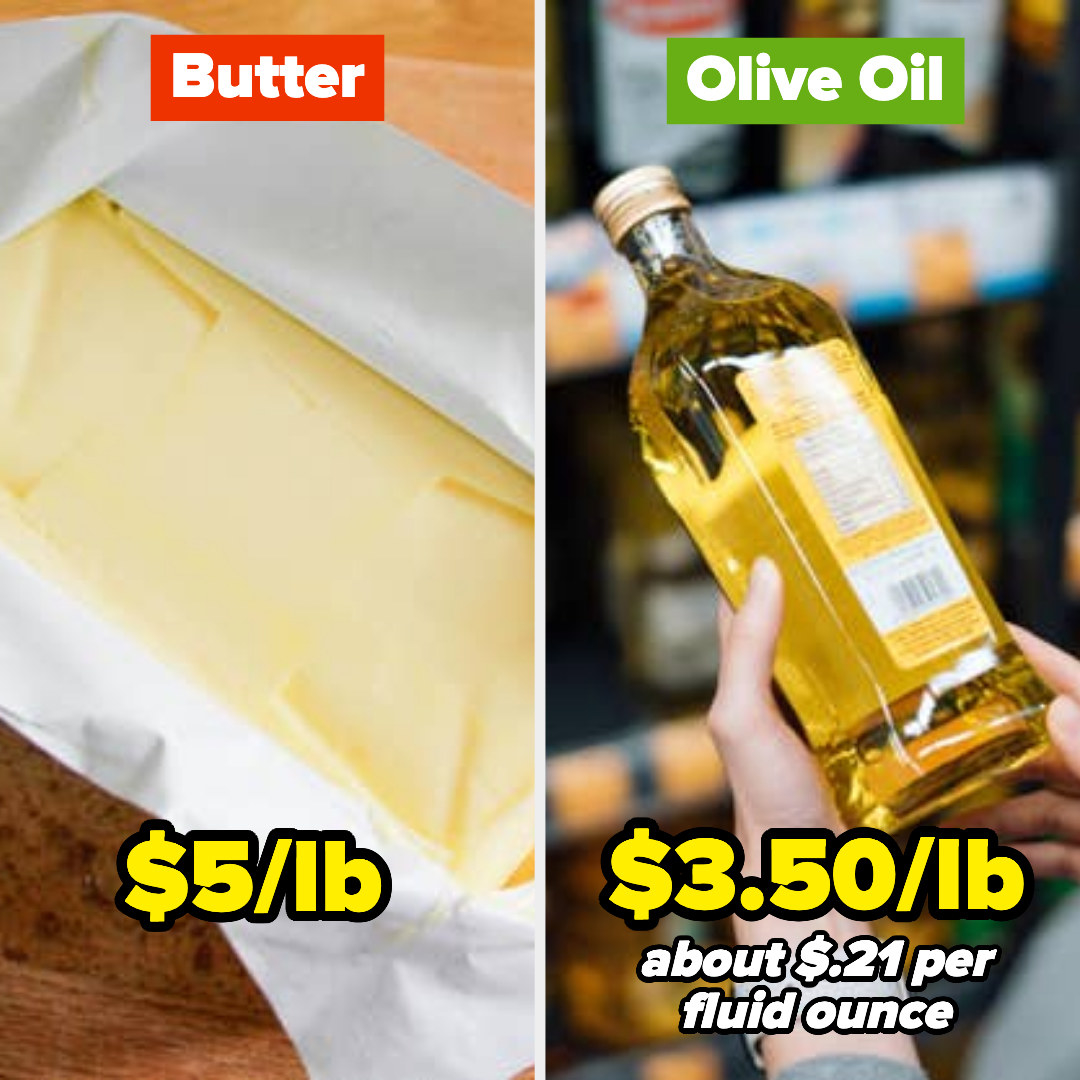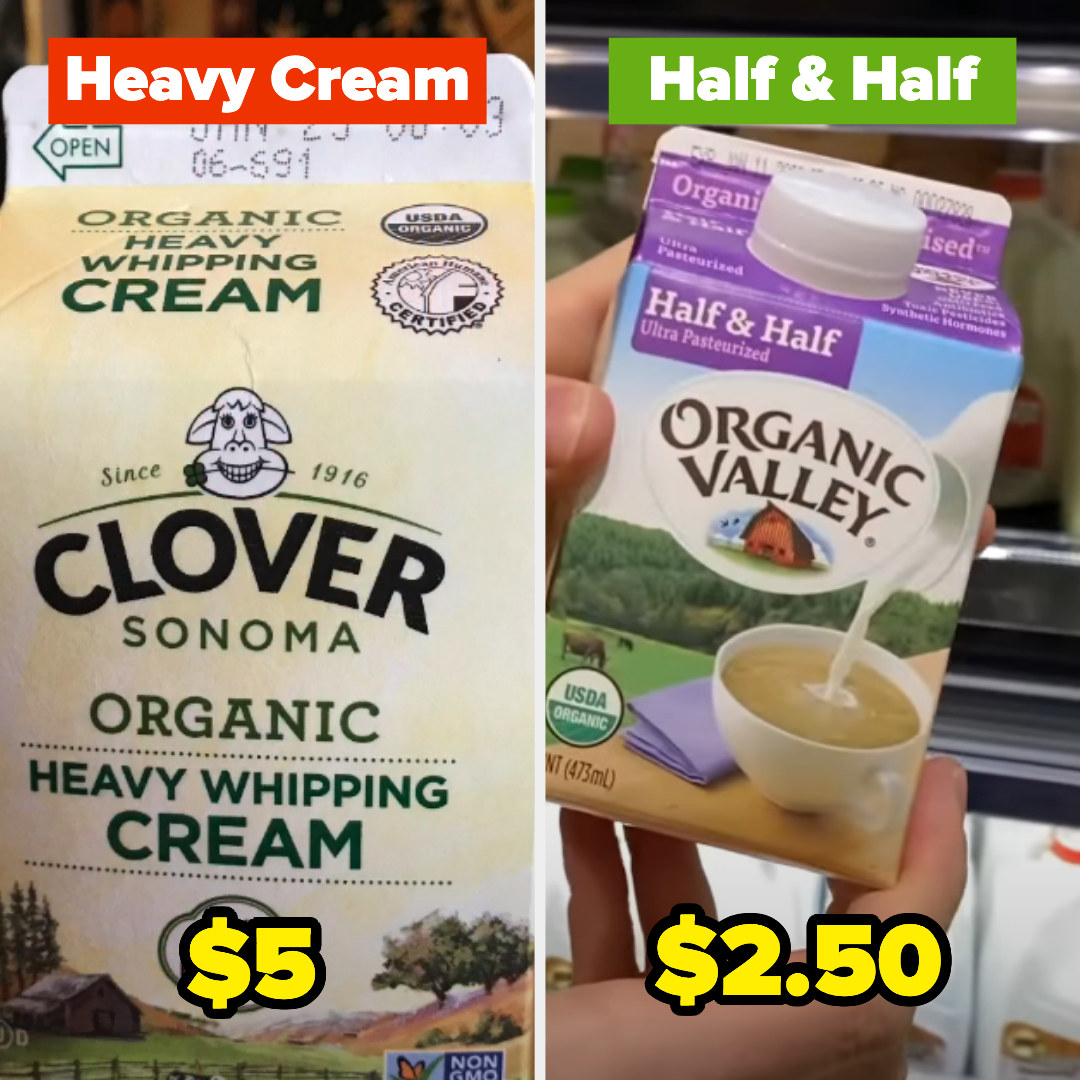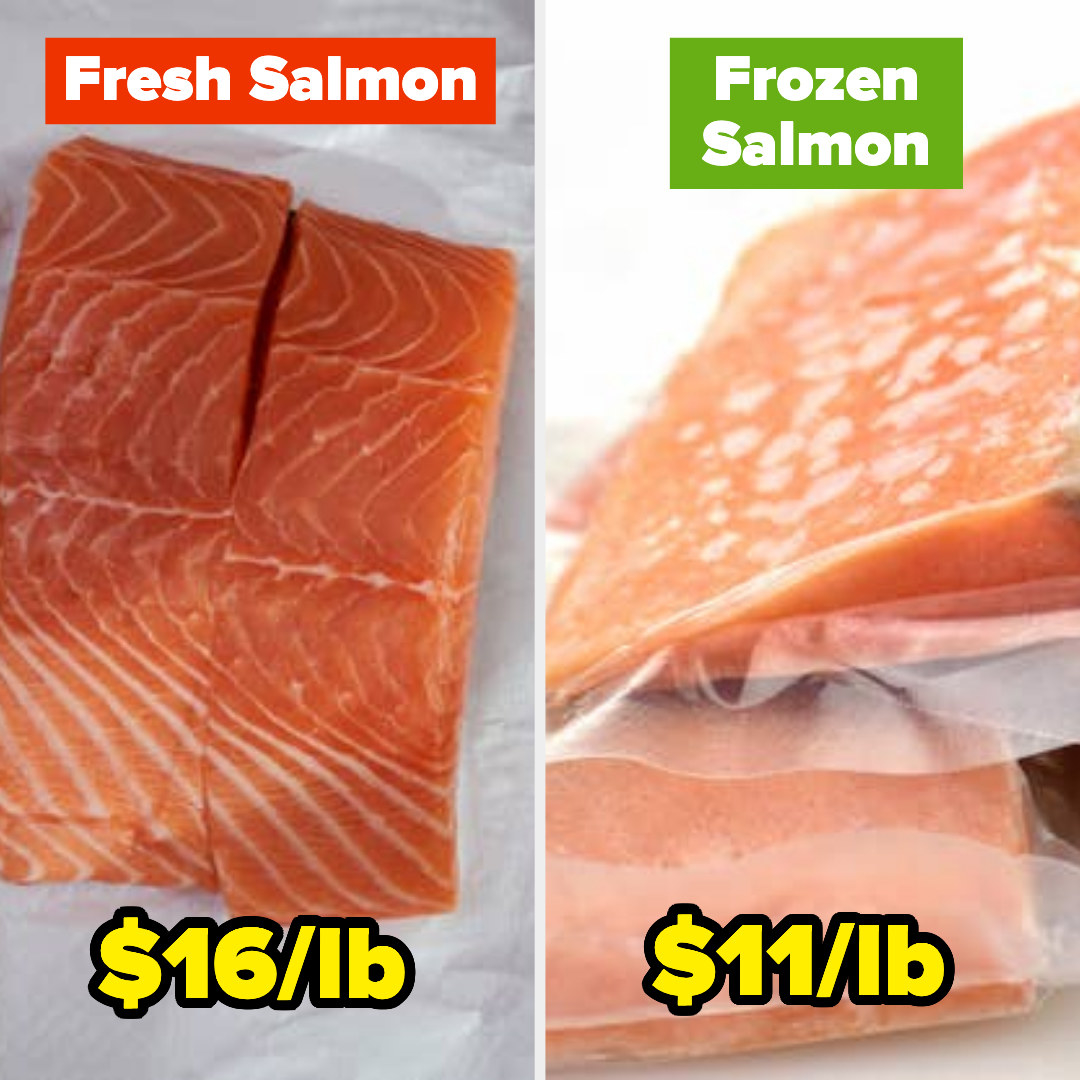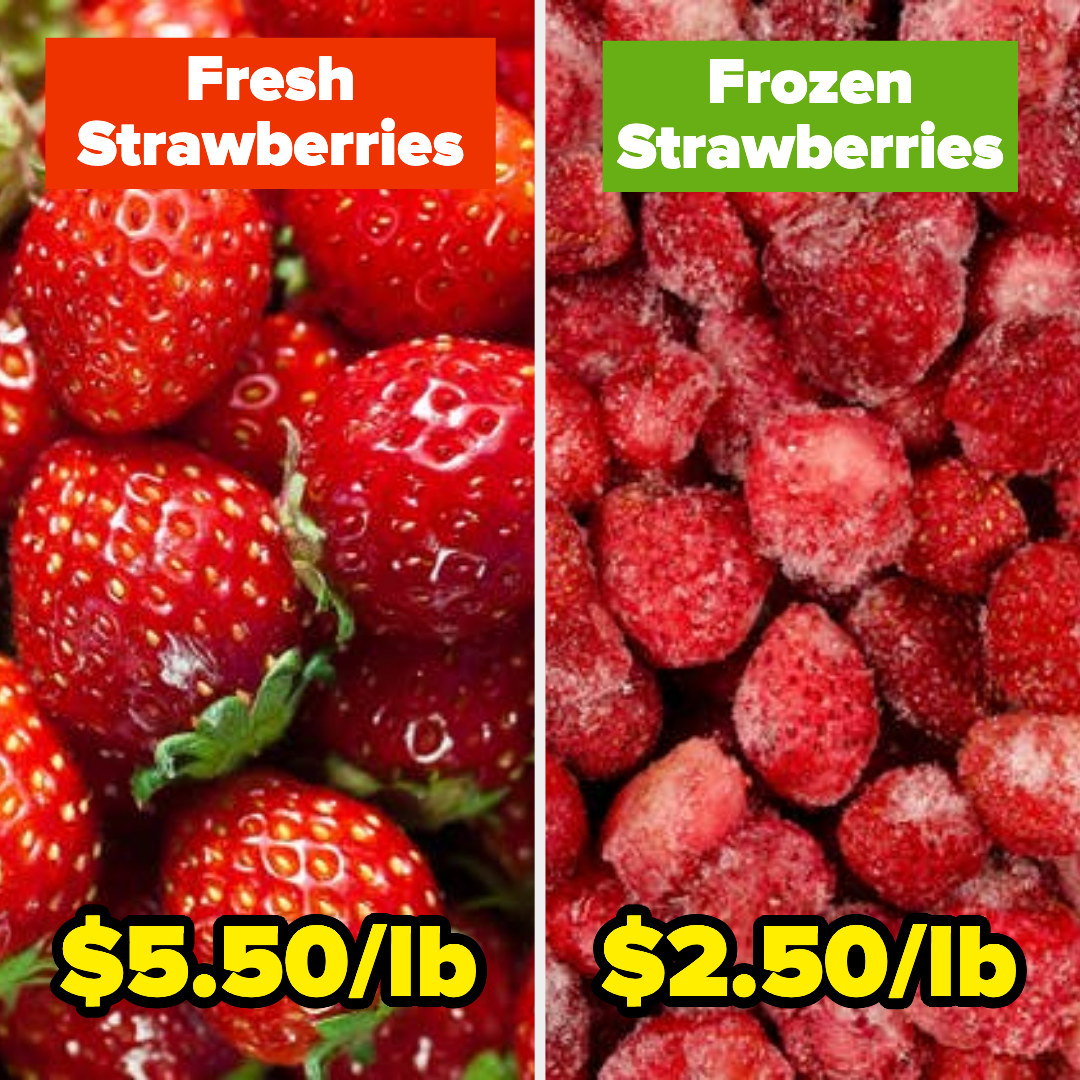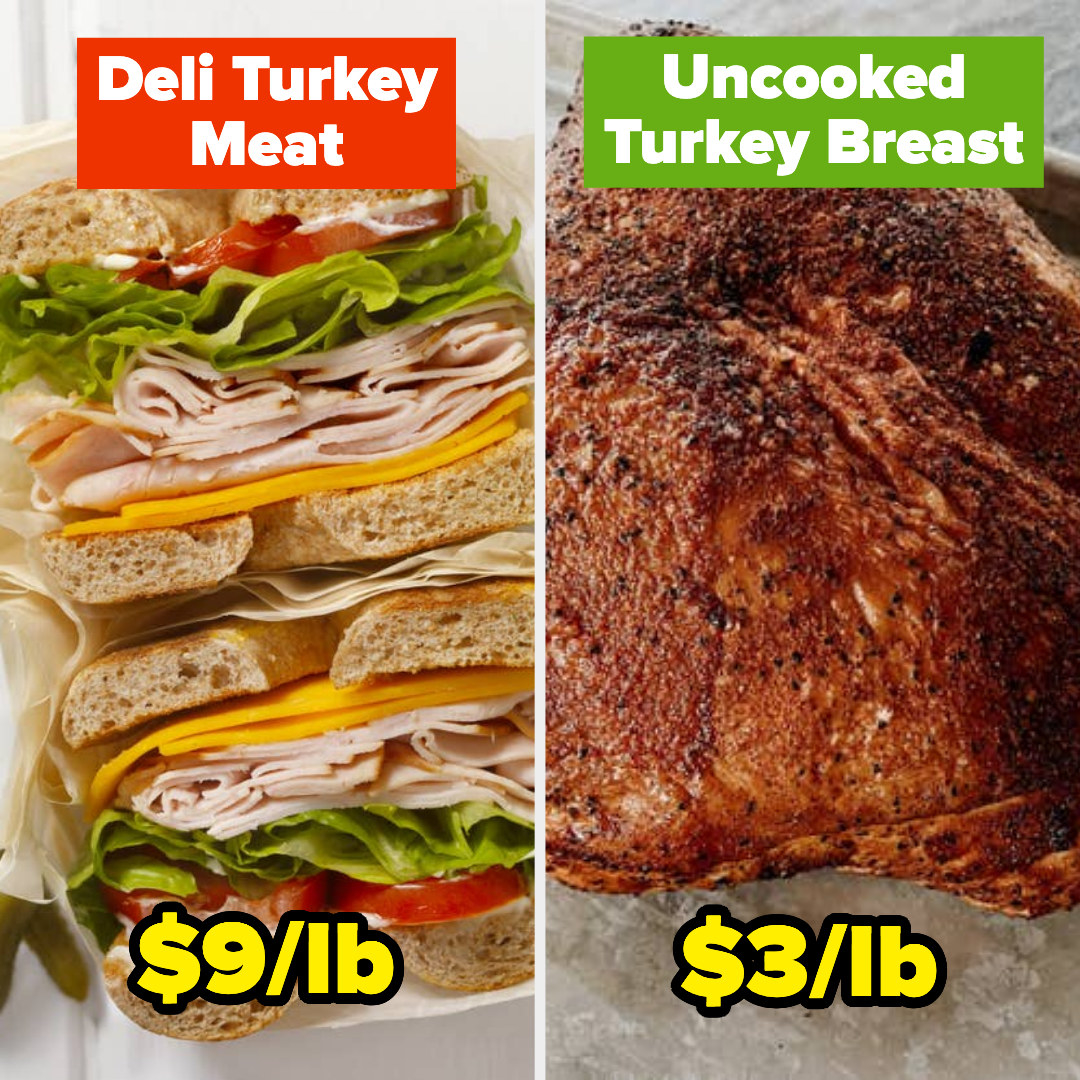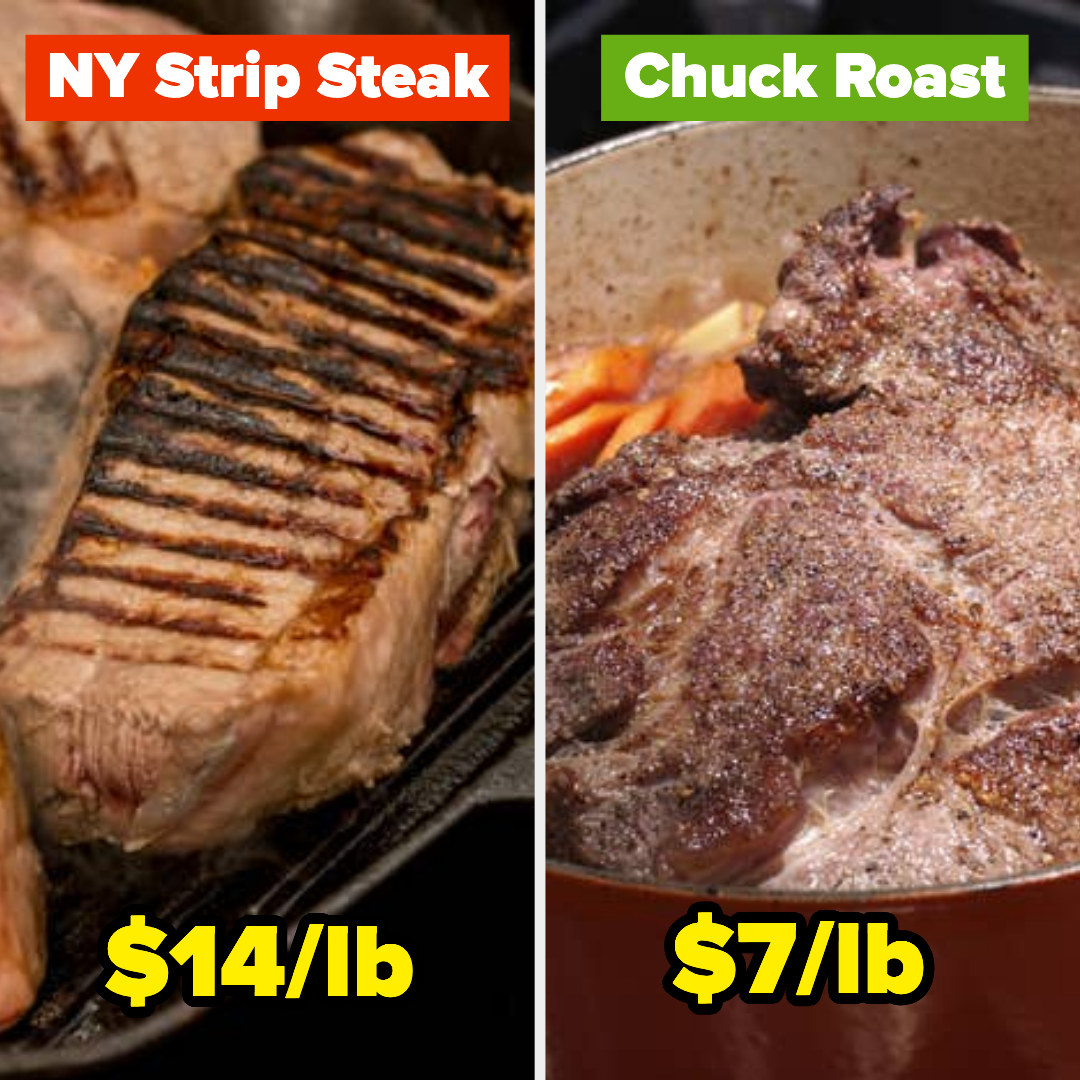The same goes for other types of cheese, too. Generic brands are still relatively cheap — especially when you buy full blocks of cheese instead of opting for the pre-sliced or pre-shredded versions. For the price of a tiny package of pre-sliced cheddar cheese, you could likely buy twice the amount if you just slice it yourself. My best advice: find a cheap, tasty, generic brand of olive oil that you can buy a big ol’ jug of and not have to repurchase for a while. (I’m a fan of Whole Foods’ 365 bottle which lasts me at least a month or two for just $8, and I also think Walmart’s Great Value cold-extracted olive oil is pretty incredible for just $11.) Use it for the vast majority of your cooking and only grab the butter from your fridge when it’s 100% necessary to cook with, like making creamy sauces, preparing baked goods, or even buttering bread. To buy the cheapest butter, wait until it goes on sale. It often does! Since it’ll keep in the freezer for six to 12 months, depending on the type, you’ll save the most money in the long run by stocking up when it’s cheapest and defrosting sticks as you need them. Just be careful when adding cold half & half to a boiling hot dish — it’s always better to slowly bring the half & half up to the temperature of whatever you’re adding it to so it doesn’t split or curdle, but curdling fresh half & half isn’t the easiest thing to do, anyway. “I noticed the quality go down a lot during the pandemic, too. It’s ‘fishy’ tasting half the time I do get it now.” —u/salsalady123 You’ll easily save a few bucks by walking past the seafood counter and opting for frozen salmon instead. In addition to being more cost-effective, they’re also usually pre-portioned, which means that you can cook as much or as little as you’d like come dinnertime and stash the rest in your freezer for another night. But if the cost of frozen salmon is still prohibitive, I’d highly recommend giving canned salmon a try. I’ve always found it surprisingly delicious, and while it can’t exactly replicate all the goodness of a flaky filet of seared salmon, it’s well-suited for a variety of other equally-delicious recipes. Think salmon cakes, rice bowls, or even scrambles and frittatas. Learn to buy fresh fruit (and vegetables, honestly) with the seasons. It’ll save you money and taste better. But if you must bake a batch of blueberry muffins in the dead of winter, and I wouldn’t blame you for it, opt for frozen fruit. Eaten defrosted, on its own, there’s no way you’ll be tricked into thinking you’re consuming fresh fruit, but when added to baked goods, oatmeal, or smoothies, I guarantee you won’t be able to tell the difference. And let’s be real: Frozen fruit straight out of the freezer is a pretty iconic snack. Personally speaking, I’ll continue to buy eggs for this exact reason, even with my very tight grocery budget. And if you belong to a wholesale club, like Costco or Sam’s Club, I’d highly recommend grabbing your eggs there instead — buying in bulk could easily get your cost-per-dozen down to around $3 or $4. But if you’re skipping them until prices hopefully come back down, I totally get it. There are plenty of delicious, non-egg recipes you can lean into for breakfast or a quick meal, and even if you solely rely on eggs for baking, there are several decent, cheaper substitutes. “Flax eggs” work really nicely for dense baked goods, like cookies and brownies, while carbonated water will actually do wonders for lighter treats, like cakes and bread. The results won’t be exactly like the cold cuts you’re used to, but I actually think the homemade version is tastier. Unlike cooking a whole turkey, cooking just the breast is also a lot more straightforward and user-friendly, no matter how skilled or unskilled you are in the kitchen. Just be sure to make your slices of cooked turkey as thin as possible so you end up with a similar texture to the deli-sourced stuff. While grocery prices are sky-high, swap your beef stir-fries and steak nights for braises, stews, and roasts. Since recipes like pot roasts and slow cooker braises also tend to feature cheap, filling ingredients in addition to the meat — like potatoes, rice, or carrots — you’ll also end up with a larger volume of filling, budget-friendly food to stretch your dollar even further.
